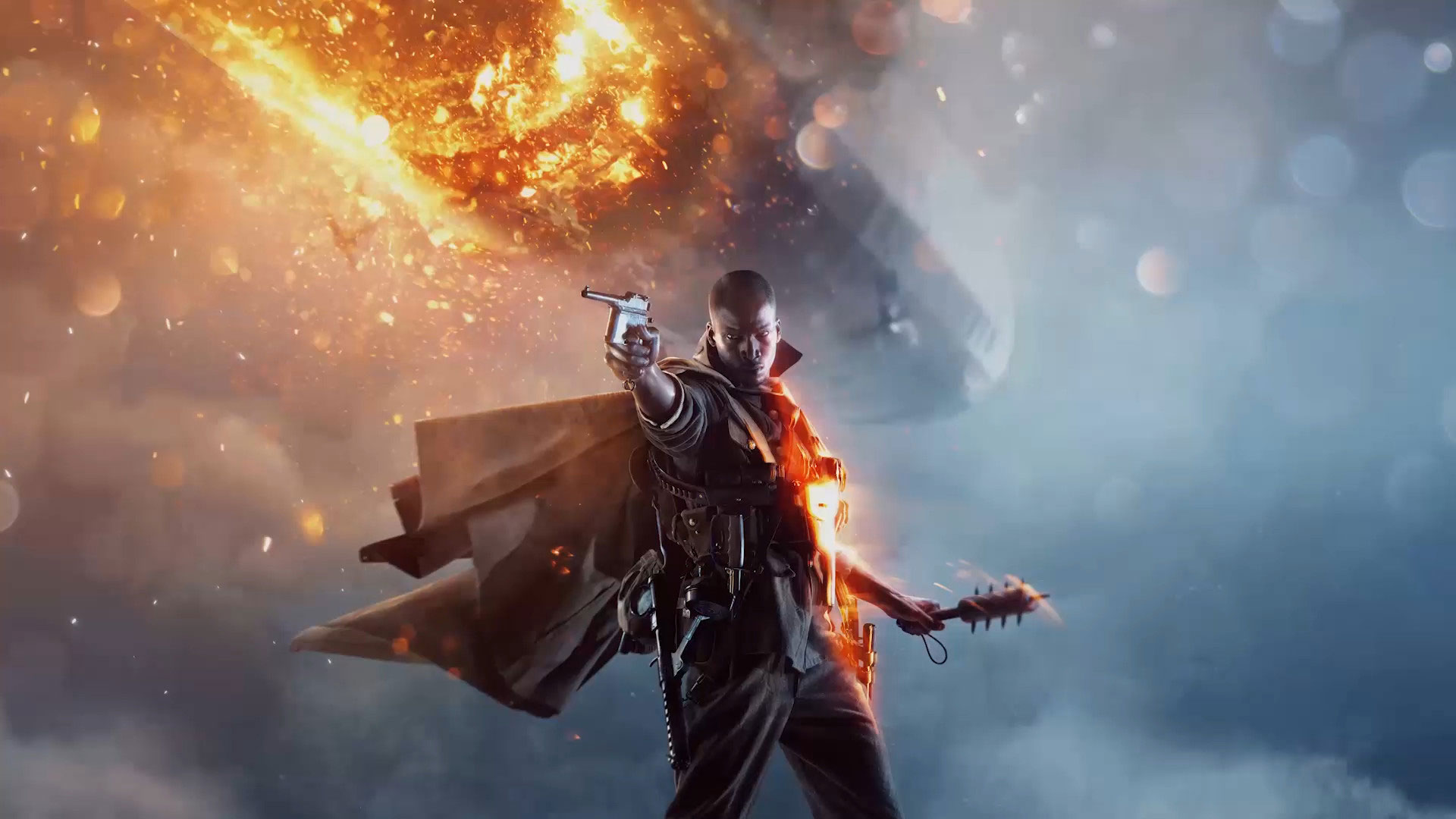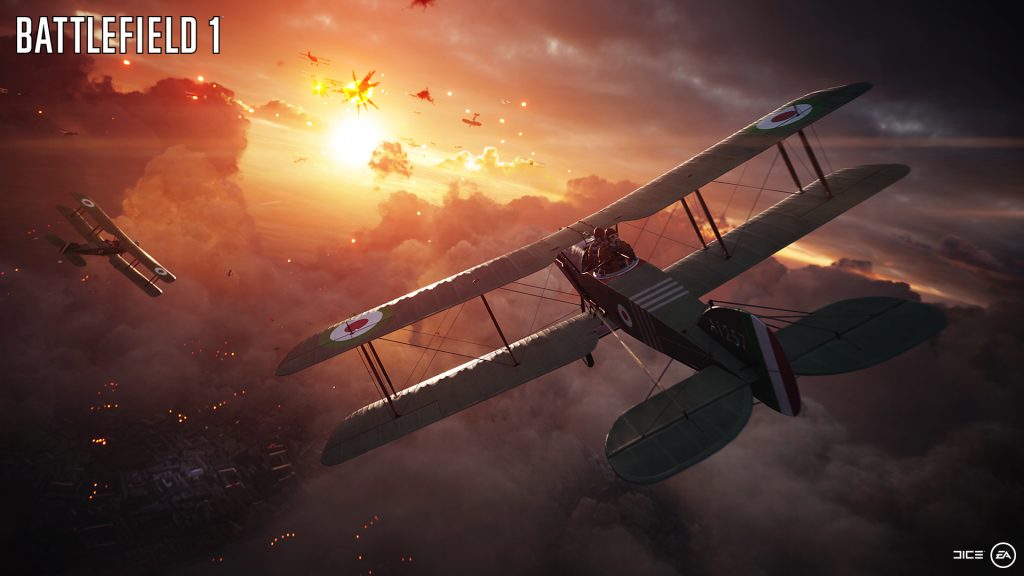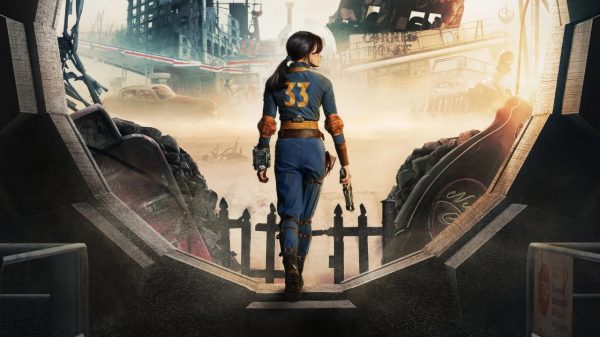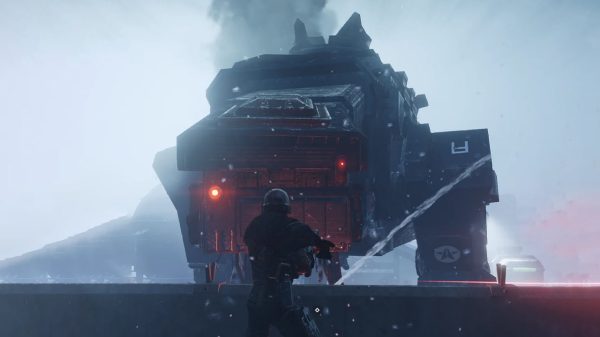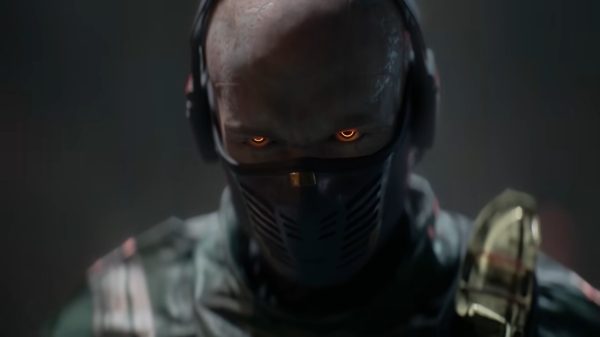Battlefield 1 hits the release button in a couple of weeks, and there’s still rabid controversy regarding the game’s historical accuracy. Being a self-proclaimed History Connoisseur, I feel that the deed falls upon me to put the game’s single-player in perspective. As usual. But never fear, dear reader: I am not a nay-sayer (at least, not any more), so you won’t get any of that nasty racist business from me…even if I’m salty that there’s an American on the cover of a First World War game.
As of the time of writing, DICE and EA have revealed six single-player stories. Friends In High Places has you climbing into a biplane in the Royal Flying Corps as an oddly American pilot over the Western Front.
Nothing Is Written casts you as a Bedouin woman warrior working alongside Lawrence of Arabia (yes, that one) against the Ottoman Empire.
You drive the legendary (and very unreliable) British Mark V tank in Through Mud and Blood and spaghetti falls out of the Austria-Hungarians’ pockets as you fight alongside Italians on the Alps in Avanti Savoia.
The Runner features an Australian messenger in the middle of the infamous Gallipoli campaign, and another (unnamed) chapter that’s ruffled some feathers. We also know that an African-American soldier is a protagonist in the game as well in an as of yet unnamed chapter.
So crack open your rum rations, light up the cigarettes in your drenched pocket (but never light three with a single match), pray to God, and prepare to go over the top. Or the dune. Or the cloud. Or the racial segregation. Or the mountains.
Friends who might be a little too high to be in a great deal of places
Before there was the Royal Air Force (the single biggest factor in giving a very British middle finger to the Nazis) there was the Royal Flying Corps. Established in 1912 as a primarily reconnaissance and artillery spotting force, the RFC numbered only 113 aircraft at the outbreak of war in 1914. By 1918, they numbered nearly 22,000…and that’s not counting naval planes. British aircraft throughout the war were out-numbered, out-gunned, and out-trained. This didn’t stop them being brave and very popular bastards. The RFC were merged with their naval counterparts in late 1918, and became the RAF. It’s safe to say that the First World War wrote the industrial warfare book, and the role of aircraft was never underestimated ever again.
In Friends in High Places, you play as Clyde Blackburn (the possible great-great-grandfather of Battlefield 3‘s Blackburn). He’s ‘one Hell of a pilot’, and he’s not afraid to show it. He’s recently joined the Royal Flying Corps, and is looking to prove himself. He’s also American.
“Whaaaaat?” I hear you cry, “So this is before the American Revolution”? You’re just about two centuries off, but that’s not the point. Yes, Americans did in fact join the RFC before the USA entered the war in 1917. This was part of a cross-Atlantic deal between the US, Canada, and Great Britain.
By early 1917, about 200 Americans had joined up with their British friends after doing joint training in Canada. We can sarcastically expect this campaign to be shorter than the others, as the life expectancy of an RFC pilot on the Western Front around late 1917 was about 10-15 days. And that isn’t all down to pilot experience.
The plane you’ll be bumbling about in Friends in High Places is the Sopwith Camel, a familiar name to any WW1 buff. The Camel had more confirmed kills than any other aircraft of the war, and even functioned well as a ground attacker after it had become obsolete. It had been built to replace its predecessor, the Sopwith Pup, which was politely deemed by pilots as ‘a bit shit’. It was the first British aircraft to use the synchronisation gear, which let it time its bullets with the propellers of the aircraft. Over 5000 were built, but only eight originals remain.
You’ll be going toe-to-toe with zeppelins in Battlefield 1, and this is accurate for the late war period, but not at the in-game altitude. It was suicidal for zeppelins to fly as low as they do in the game, as their gigantic husks were prone to artillery fire. In fact, this was the cause of the most zeppelin kills during the war. But if there’s one thing it can do at that altitude, it’s ‘look fucking cool’.
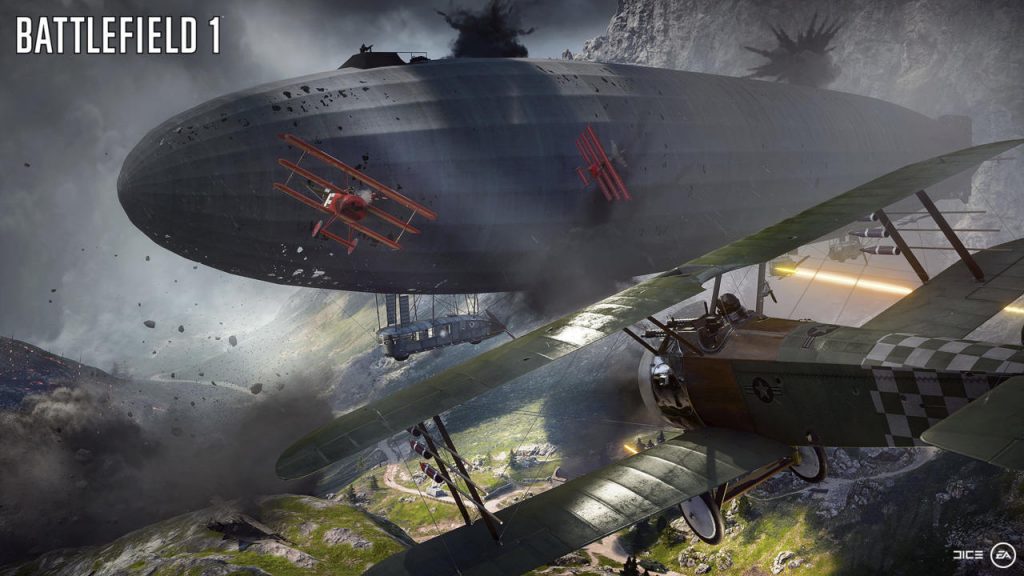
Fly me to the moon.
Nothing is written but what we write for ourselves
Ah, the Ottoman Empire. Where do I even begin with these guys…a former rag-tag group who eventually ‘united’ (read: conquered) the Islamic peoples of the Middle East and North Africa, causing Europe to shit their pants (or jorts) more than once.
Eventually, they stagnated into their traditions and fell in a war of independence led by a man called Mustafa Kamal Atatürk after the First World War. We’ll get to him later.
The Ottomans were mostly involved in the Middle Eastern theatre of the war, but they did engage the Allies in the Balkans and traded more than a few blows with the Russians. However, it’s in the sands of Arabia where Nothing Is Written takes place.
You play as a Bedouin woman who – I’ve lost you already, haven’t I? Ergh. Let’s start from the top.
Nothing Is Written takes place during the Arab Revolt against the Ottoman Empire that took place alongside the First World War. You’ll play as one of these rebel groups, the Bedouin. These guys were Muslim nomads who felt oppressed under Ottoman rule. In their defense, they were pretty damn oppressed.
As such, they joined the Revolt one isolated tribe at a time. But there’s one small problem. The Ottomans have artillery, modern rifles, machine guns, and the resources of the whole empire. These guys had antiquated rifles and horses.
And when I say guys, I don’t mean that in a gender-neutral way…this time. Yes, Battlefield 1‘s protagonist in this chapter is a completely fictional figure, due to the highly patriarchal nature of Bedouin culture, but that doesn’t mean she can’t kick ass.
There’s a reversal here too. A character you might think is made of fiction, but is actually set in cold hard reality. Ever hear of Lawrence of Arabia? Yeah, that guy. The one with the awesome movie, he’s totally real.
Bearing the substantially less cool-sounding name of T.E. Lawrence (Thomas Edward Lawrence, if you’re picky), he participated in and led attacks and raids against Ottoman positions alongside Arabic rebels as a liaison for the British. Oh, and he’d been an archaeologist. And a colonel. And designed boats. In short, he wasn’t somebody to be fucked with.
But did he fight an armoured train? Well, no. Armoured trains were popular for the late 19th and early 20th centuries, and were used in a wide variety of theatres by most major powers as a means to easily defend vital supplies. The Ottomans, however, did not use them. This makes the inclusion of one in Nothing Is Written more than a little strange. Inaccurate? Yep. Fucking awesome set-piece? Yep.
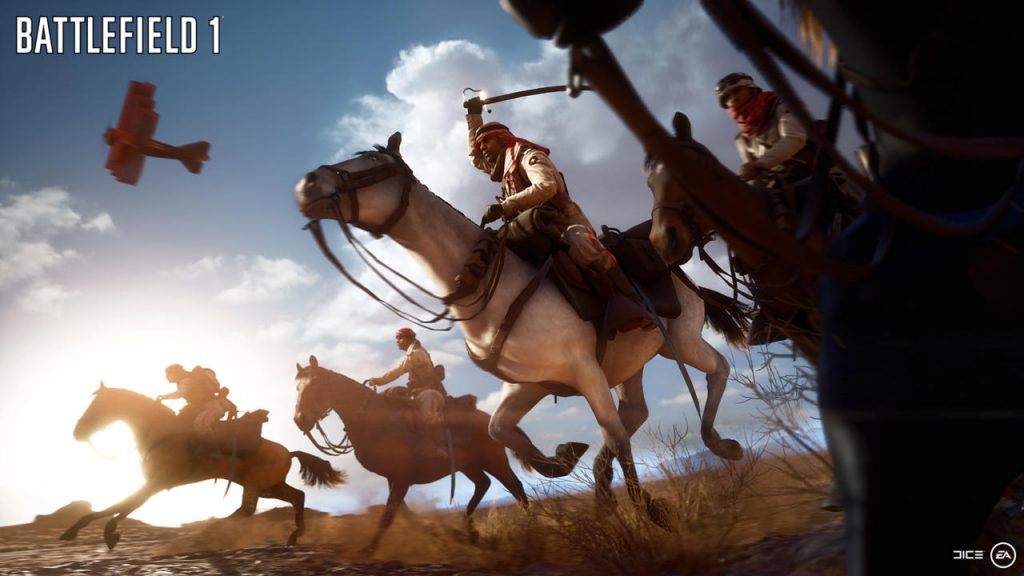
“You’re not German, are you?”
“Neigh.”
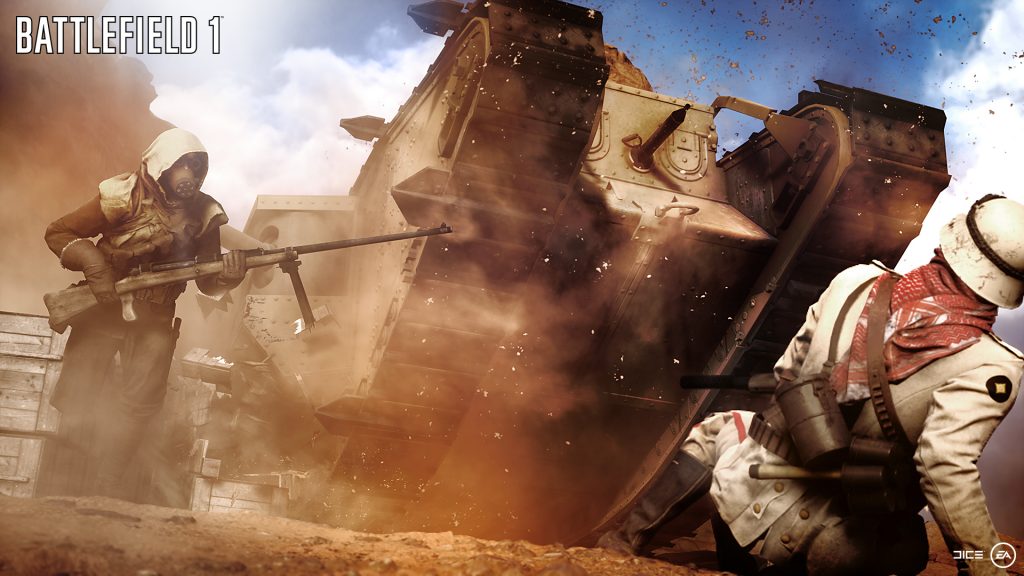
“Tanks!”
“You’re welcome.”
Through Mud, Blood, and Claustrophobia
Tanks! Who doesn’t love some rolling thunder? The shaking of the chassis as it’s propelled by mighty engines, the loud boom from their incredible guns, the raw power packed inside them…it’s no surprise that everybody wanted a piece of that sweet, sweet armoured pie. Britain, Germany, and France all deployed tanks in the First World War, with varying degrees of success.
The British would adopt the idea first but it took them several tries to get right, the French would eventually design the best tank of the war after some hiccups, and the Germans made 20 tanks in the entire war. They decided to go with anti-tank weaponry instead, which sounded good in theory. In theory.
Through Mud and Blood puts you in a British Mark V ‘Male’ tank, along with all seven of your crewmates. The Mark V held eight men in total (the commander, the driver, and six gunners). The Mark V was also the first British tank to only require one driver, as previous models had required one for the ‘wheel’ and another for the transmission.
Battlefield 1 is keeping mum on the amount of people in their tank, but I don’t think it’ll be eight. The tank made its debut alongside Australian forces at the Battle of Hamel in 1918, and restored the Allies’ confidence in tank technology. DICE have done an admirable job at portraying the tank accurately, except for its top speed.
The tank, in perfect conditions, was capable of reaching 8km/h (or 5mph) which is just about as fast as that group of 30-something ladies who powerwalk in the park every morning. But Battlefield 1 is right about the tank’s unreliability mechanically; while the tank was more reliable than its predecessors they still had a tendency to break down fairly frequently, particularly with inexperienced crew.
Which was, in early 1918, pretty much everybody.
Through Mud and Blood takes place on the Western Front, in the autumn of 1918. The player and their crew are tasked with assisting an Allied breakthrough in the town of Cambrai, an actual historical battle (not to be confused with the Battle of Cambrai in 1917), during the Hundred Days Offensive.
Spoiler alert: British, Canadian, and New Zealand troops easily pushed the German occupiers out of the town due to their use of armor and aircraft. At this point of the war, the Germans had conducted a failed major offensive along the Western Front, as a pre-emptive move before the Americans arrived in Europe, after the Russians left the war in early 1918.
After the offensive failed to achieve substantial advantages, the Germans simply dug in and awaited Allied mistakes. These mistakes never came from the now well-oiled Allied command machine, and the Hundred Days Offensive would be the final nail in the coffin of an exhausted Second German Reich.
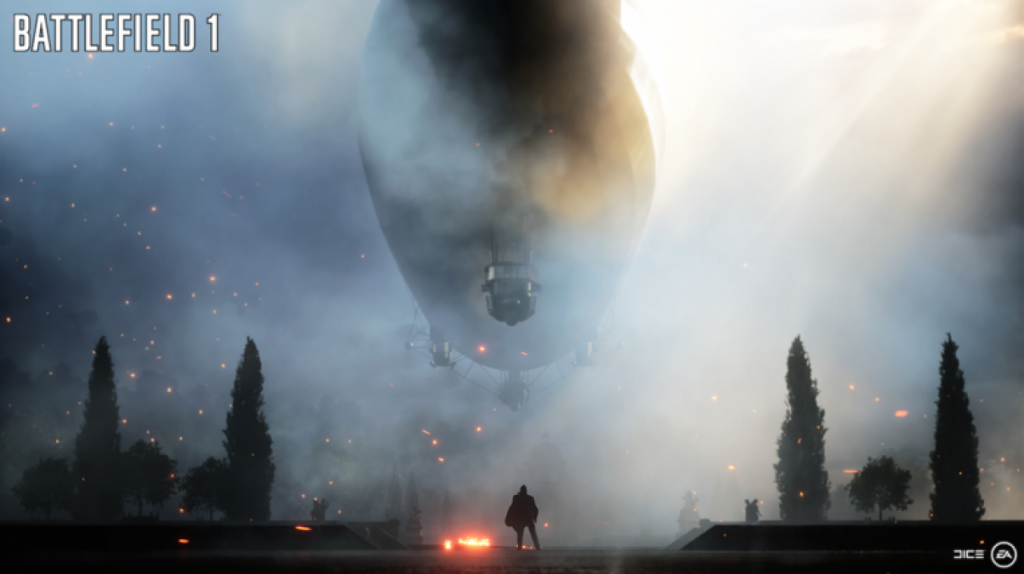
“You’re a big zep.”
“For you.”
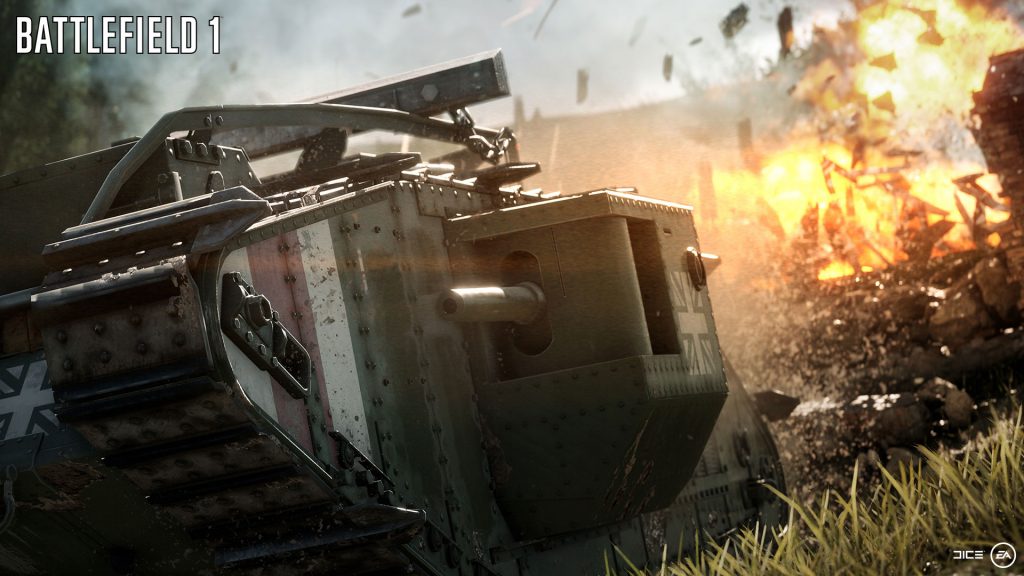
They called them ‘iron coffins’.
Mambo Italiano
Now here’s where things get particularly hardcore. Yes, more hardcore than the Western Front. For the sake of simplicity, here’s the synopsis of the Italian Front: Trenches on mountains. Hand-to-hand combat on sheer slopes. Freezing temperatures casting ice on every surface that spells death if you slip. Italians.
It’s here where Avanti Savoia takes place. ‘Avanti Savoia’ literally translates to ‘Come on, Savoia!’ (a common battle cry for Italian troops in the First World War). The Savoia part is in reference to the House of Savoy, a family of Italian nobles that held the throne of Italy during the war. They would have stayed in power after the war ended, but Fascism became a thing and…yeah.
You play as an as of yet unnamed Italian soldier in the Reparti d’assalto (Assault Troops), who came to be known as the ‘Arditi’…but not until after the war. Battlefield 1‘s website mentions the taking of a fort, which isn’t much help in terms of finding a time and place.
However, judging from the ‘let’s go win a war’ kind of game that Battlefield tends to be, it’ll most probably be referring to the Battle of Vettorio Veneto in 1918. Italian command had recently held back a large attack by Austria-Hungarian forces, but didn’t follow up with an offensive action. They deemed it ‘dangerous’, and waited for reinforcements.
The Austria-Hungarian Empire falling apart at the seams by late 1917 helped too. The Italians dealt a decisive strike in October of 1918, and the war on the Alps came to an end.
As for that massive armor that’d make Ned Kelly hang up his revolvers in shame? Never existed. Purely fiction. Although some prototypes for that kind of thing were developed by Allied forces during the war, they never came to fruition due to how damned impractical they were. Shit’s heavy, yo. Is it still really cool? Oh yeah it is. Pop pop pop, watching Austrians drop.
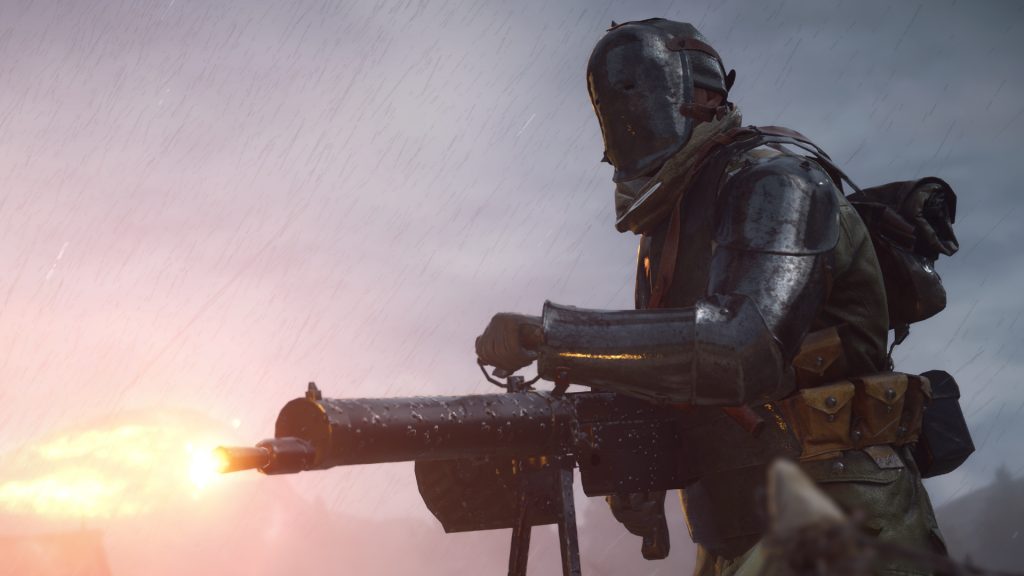
Whatever happens, it matters not, for I have badass armour, and they do not.
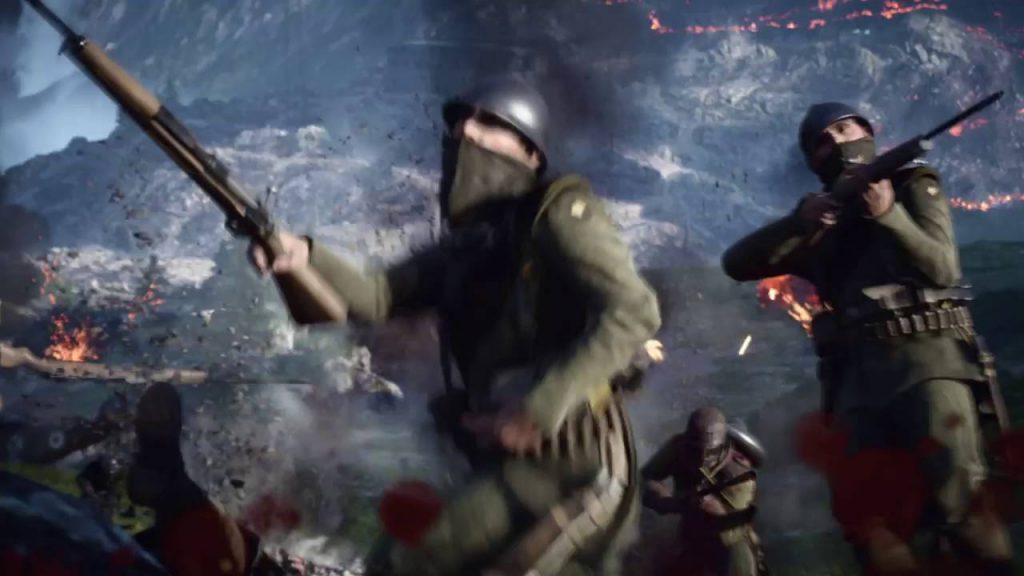
Two days from retirement…
Put some Turks on the barbie
Australia: A land as massive as it is vast. Home to many different (and very dangerous) flora and fauna. Snakes, sharks, spiders, Australians.
So what happens when people bought up in these harsh conditions go to war? Magical things. Australians had proven themselves on the battlefield before the First World War, so the Allied high command considered them perfect for their latest campaign. It was hoped that an Allied landing on the Ottoman-held Dardanelles would open up seafaring routes for the Russian fleet and knock the Ottomans out of the war.
What they got was one of the greatest failures of the war, and one of the campaign’s British commanders was forced to resign in shame. Nah, just kidding, they made him Prime Minister.
The Runner takes place in the middle of this carnage, and you get a front-row seat. You play as Frederick Bishop, a messenger for the ANZAC forces at Gallipoli. Mel Gibson in the 1981 film Gallipoli was also a messenger. Pretty neat, huh?
You’ll fight alongside the Allies as they storm the beaches and begin the unfortunate campaign. Allied battle plans for the landing expected minimal Ottoman resistance following their naval bombardment of nearby strategic targets.
However, they failed to destroy an adequate mount of Ottoman artillery batteries. Let’s do some math: A dozen Ottoman batteries plus half a million Allied troops unprepared for a landing under fire. What does that equal? A really bad first day. The Allies lost about 20% of their landing force in that first day, and it would only go downhill from there.
The ANZACs in particular would feel the burn; Australian and New Zealander casualties were particularity gruesome, and the campaign would end with ANZAC resentment for their British commanders. Even the one they made Prime Minister. I think his name was Winston something.
At any rate, the Allied and Ottoman forces on the strait would come to mutually respect each other during and after the war. It’s here where Mustafa Kamal Atatürk comes back into play. Remember him, from a fair bit ago?
Well, he was the head of command for the Ottomans at Gallipoli and came to admire the Australian ‘fighting spirit’. After the Turkish War of Independence, Kamal would allow Australians to commemorate their new remembrance day (ANZAC Day) on the site. This is an arrangement that has continued ever since, and one that earned him a place in the Australian War Memorial bust gallery.
He’s the only non-Australian figure there.
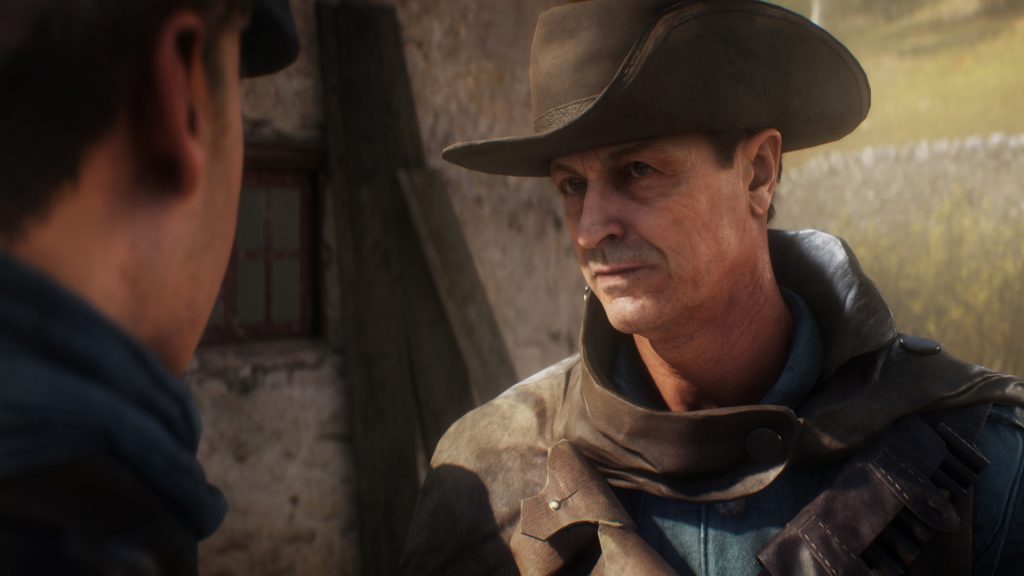
“u fuckin srs m8”
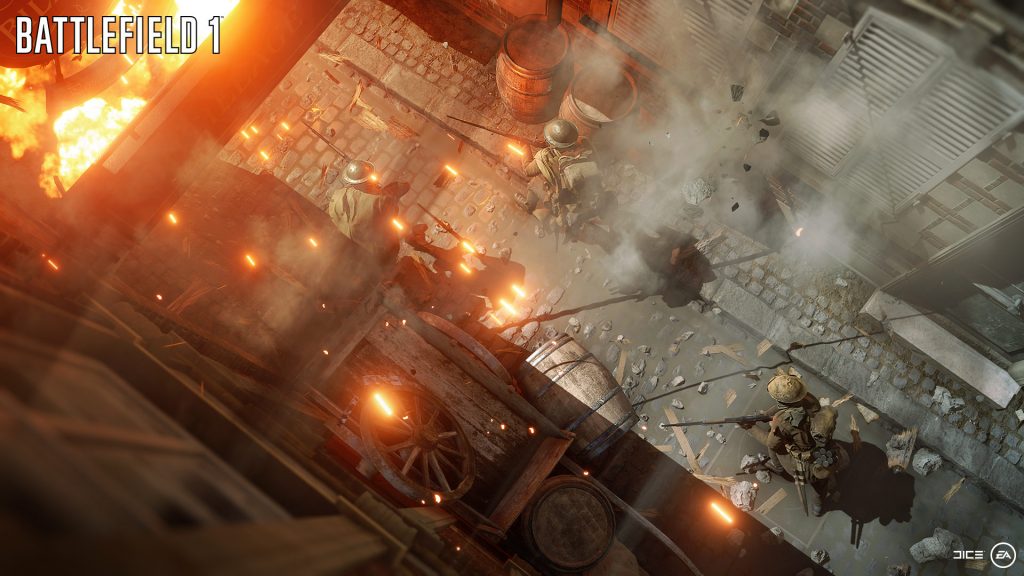
The original Street Fighters.
The elephant in the army
There we have it. Five stories, all of which tell unique perspectives of the war. Yep. Only five. There’s no controversial topics to be found relating to race here.
…I have to talk about the African-Americans, don’t I? I have to open that whole can of worms? Sigh.
Now, here’s where the debate gets fairly…interesting. Here’s the topic many historians simply don’t want to touch with a ten-foot pole, due to the amount of shit-flinging surrounding it. But, here’s the simple historical facts about African-Americans in the First World War: Africans did fight in the war, on both sides.
There weren’t many of them, but they did. Most of them were relegated to support or logistical roles, for reasons that sometimes were and sometimes weren’t race-related. African-American regiments were racially segregated, meaning that they didn’t normally fight alongside Anglo-American troops. That didn’t stop one regiment kicking serious ass, however.
In Battlefield 1, you’ll play as a soldier in the US 369th Infantry Regiment. This band of badasses was known to the Germans as the ‘Harlem Hellfighters’, so you know that they mean business. And business was booming.
The Hellfighters enjoyed many victories on the battlefield, and were one of the most successful American regiments of the entire war. Every one of their engagements was a hard-won victory against the odds. They were instrumental in redefining American attitudes to their black population, and I’m really glad that they’re finally getting the spotlight.
“But what about the other armies? You can select them in multiplayer!” you cry. Settle down, I’m getting there. Before the US allowed African-Americans to serve by passing the Selective Service Act in 1917, African-Americans had to enlist through the Canadian or French armies if they wanted to serve. As such, they did indeed serve in these armies.
European empires also drew heavily from their colonial subjects to assist their war efforts in the non-European theatres, but these peoples rarely saw action in Europe. But, even if they didn’t serve in these forces, their inclusion in a goddamn character customisation screen for a multiplayer game is a pretty pathetic thing to be riled up by. I mean, not calling you a racist here, buuuuuuuut…
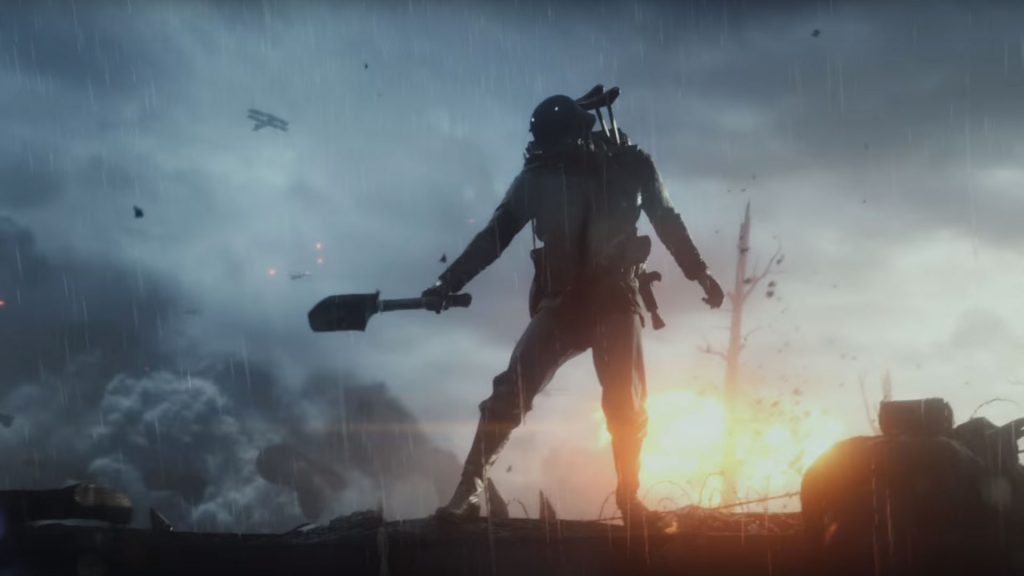
With a shovel and spade and a hand grenade…
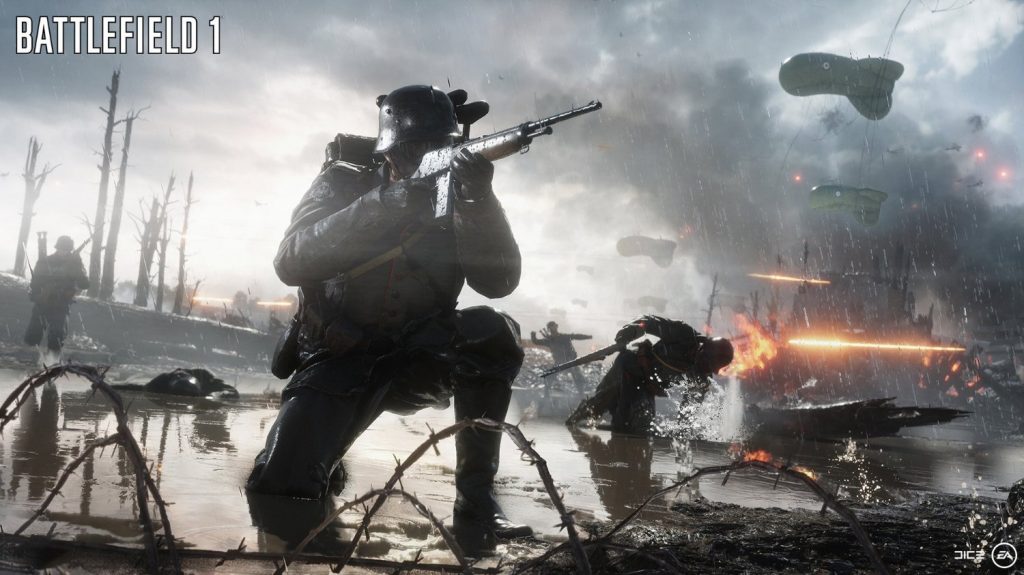
Ich bin ein dead man.
If the sergeant steals your rum, never mind…
Battlefield 1 looks to provide at least an 8/10 in historical accuracy for its single-player campaigns, which is a very high number for such a huge franchise that could have simply chucked in the uniforms and called it a day.
Granted, the game’s heavy use of weaponry that never saw combat for the sake of gameplay is pretty frustrating to history buffs. Yeah, the French and Russian armies aren’t playable despite them being the biggest contributors to Allied victory. The French alone lost more than two million men.
Having said all of that, Battlefield 1 looks like it’s going to inspire a lot of people to read up on the most ‘important’ war of the 20th century and realise that it wasn’t just sitting in a trench all day. At least, not all of it. And, best of all, people will stop calling the First World War ‘the boring wwar?one”. Come October 21st, I hope you’ll join me as I go over the top. Tally bally ho!
Sources/further reading
Ralph Baker, The Royal Flying Corps in World War I (2002)
Charles Stephenson, Zeppelins: German Airships, 1900-40 (2004)
David Murphy, The Arab Revolt 1916-18 Lawrence Sets Arabia Ablaze (2008)
David Fletcher, The British Tanks, 1915-19 (2001)
Nick Lloyd, Hundred Days: The End of the Great War (2013)
Mark Thompson, The White War: Life and Death on the Italian Front, 1915-1919 (2008)
Jeffrey Grey, A Military History of Australia (2008)
Stephen L. Harris, Harlem’s Hell Fighters: The African-American 369th Infantry in World War I (2003)
Arana blames her stunted social skills and her general uselessness on a lifetime of video games. Between her ears is a comprehensive Team Fortress 2 encyclopedia. Her brain remains at large.




